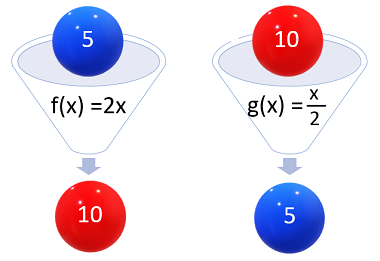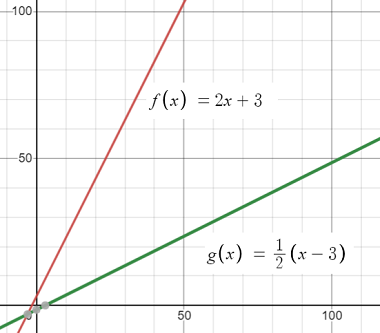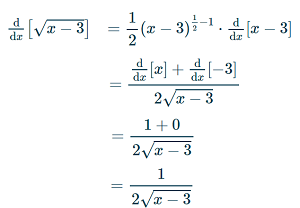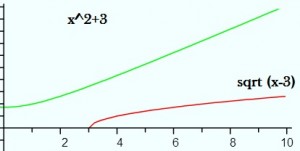Contents:
What is an Inverse Function?
An inverse function f-1(y) is a function that undoes another function; you can think of a function and its inverse as being opposite of each other, or flowing in the opposite direction.

The slopes of inverse linear functions are reciprocals of each other (a reciprocal is what you multiply a number by to get 1). For example, a linear function that has a slope of 2 has an inverse function with a slope of ½.

Finding Derivatives for Inverse Functions
The reciprocal fact above means that you can take the derivative of inverse functions by using a little geometry. Or, you could find the derivative of inverse functions by finding the inverse function for the derivative and then using the usual rules of differentiation to differentiate the inverse function.
You have two options:
Which one you choose is up to you. Depending on the function, one will often be easier than the other.
Example #1. Find the inverse function then take the derivative
Example problem: Find the derivative of the inverse function for the following function:

Step 1: Find the inverse function:
- Replace f(x) with y:: y = √(x – 2)
- Switch x and y:
x = √(y – 2) - Solve for y, using algebra: x2 = y – 3 →
y = x2 + 3
Solution: y = x2 + 3.
Step 1: Find the derivative of the inverse function. This is a power function, so we can use the power rule.
The derivative of the inverse function is y′ = 2x.
Example 2: Use the Inverse Derivative Formula.

Step 1: Take the derivative for the original function. Use the chain rule for this example problem.

Step 2: Insert your answer from Step 4 into the derivative of inverse functions formula (shown above Step 1):

Step 3: Replace the “x” from your answer in Step 3 with the inverse (Step 1 in Example #1):
2√(x – 3) = 2√([x2 + 3] – 3) =
The square and square root will cancel, so will the 3s, leaving 2x as the derivative of the function.
That’s it!
Tip: In order for the derivative of the inverse function to work, the function must be differentiable at f-1(x) and f′(f-1(x)) cannot equal to zero.
Warning: If you flip the graph of this example function, you only get half of the parabola. Therefore, this particular inverse only holds for x>0.

Back to Top.
References
Graph of reciprocal slopes made with Desmos.com.
Larson, R. & Edwards, B. (2016). Calculus of a Single Variable. 10th Edition. Cengage Learning.